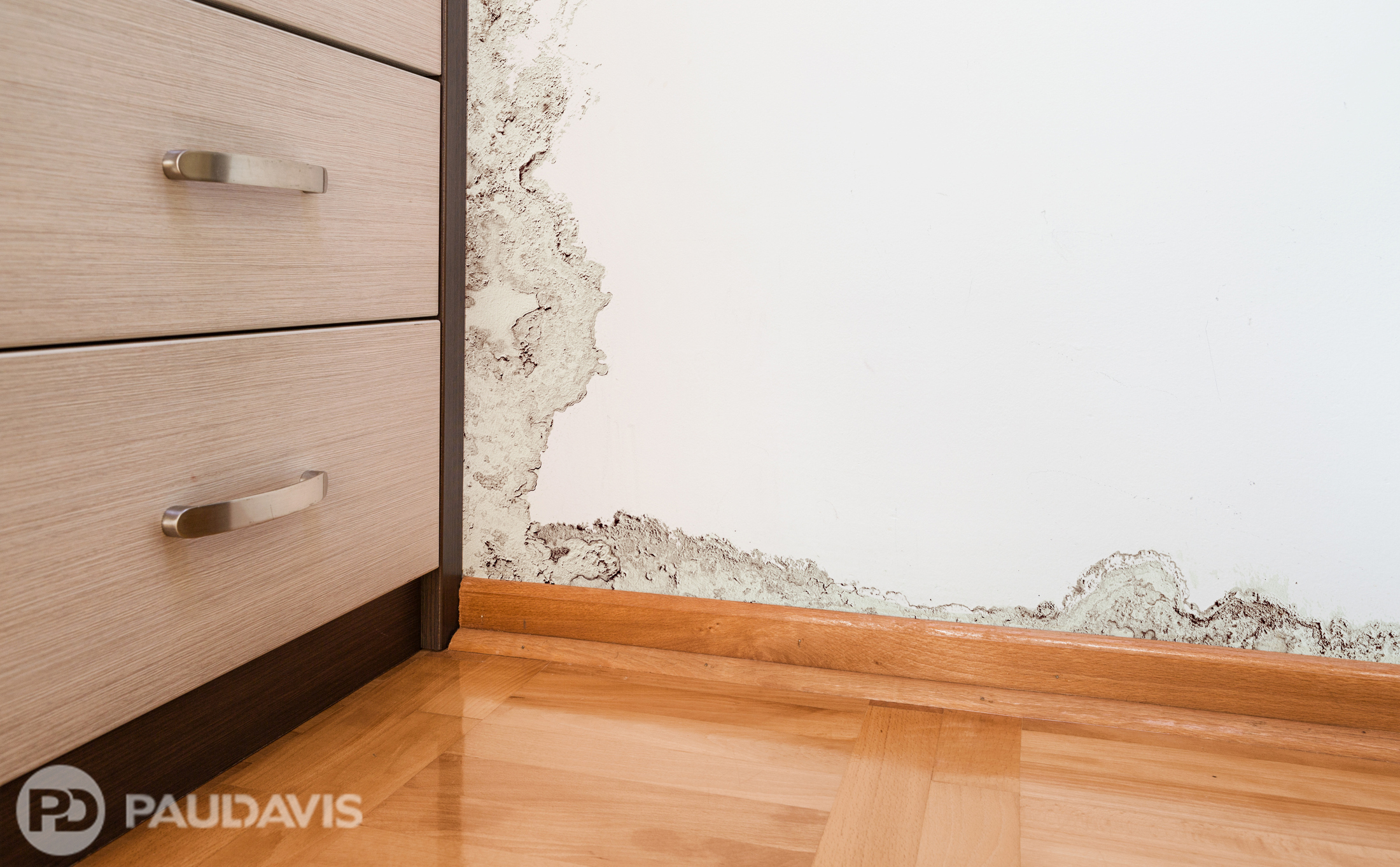
Accidental spills in the home can happen for absent-minded reasons like forgetting the tub is running while you take an important call. Or neglecting to empty the dehumidifier. Or maybe you left a towel in the utility sink that the washing machine empties into. You may ruefully mop the floor, promise to pay better attention and quickly put the unfortunate event out of mind. But even small indoor floods can cause big behind-the-scenes trouble.
“Moisture loves to hide,” says Bob Hillier, President Paul Davis of North Houston. “After soaking up standing puddles, it looks like you fixed everything. But moisture can seep into walls, under floors and floor coverings and into interior voids and remain there, providing a perfect environment for big problems down the line. You can’t see or feel the dampness, but technology and experience reveal that the water is still there out of sight.”
Paul Davis teams employ a range of technologies and methodologies to seek out hidden humidity. Moisture meters are a frequent investigative tool. These hand-held devices harness the principle of electrical resistance to measure a material’s wetness level: electricity flows better through damp materials than through dry materials like wood. “Dry wood measures between seven and 13 percent moisture,” Hillier explains. “When our moisture meter reads higher percentages, we know that area has been affected by the spill.”
The company’s experts also deeply understand how material appearance, odour, feel and stability can change when exposed to water. Paul Davis instructs its teams thoroughly, holding hands-on sessions in a state-of-the-art training center that features an advanced ‘flood house’ that floods over and over on command. Technicians see and understand the physics of floods and their effects: how water flows, how different materials absorb, how building components degrade and at what rates, how much – or how little – water it takes to damage different parts of a home. This background enables the company’s team members to observe subtle clues to water damage that elude many building professionals: slight colour changes, subtle odours, changes in weight or changes in material behaviour.
Armed with information, Paul Davis teams build a plan for restoration. The plan may include screening off areas, deploying industrial fans, frequent moisture measurements, elevated temperatures and dehumidifiers. The company also carefully weighs efficiency and economy: replacing affected materials may be the best choice instead of drying.
It is indeed tempting to mop up the puddles and move on. It’s water, you may think. In time, it will dry. Hillier discourages that strategy. “High moisture levels trigger microbial growth and encourage deterioration,” he says. “Ignore it and the studs decompose, sheetrock walls sprout black mould, the home smells bad and moisture-loving insects like termites move in.”
Struck by a sudden home flood large or small? Paul Davis arrives quickly to help.
